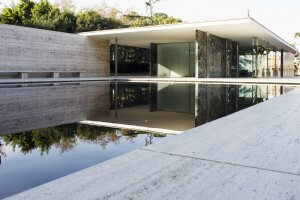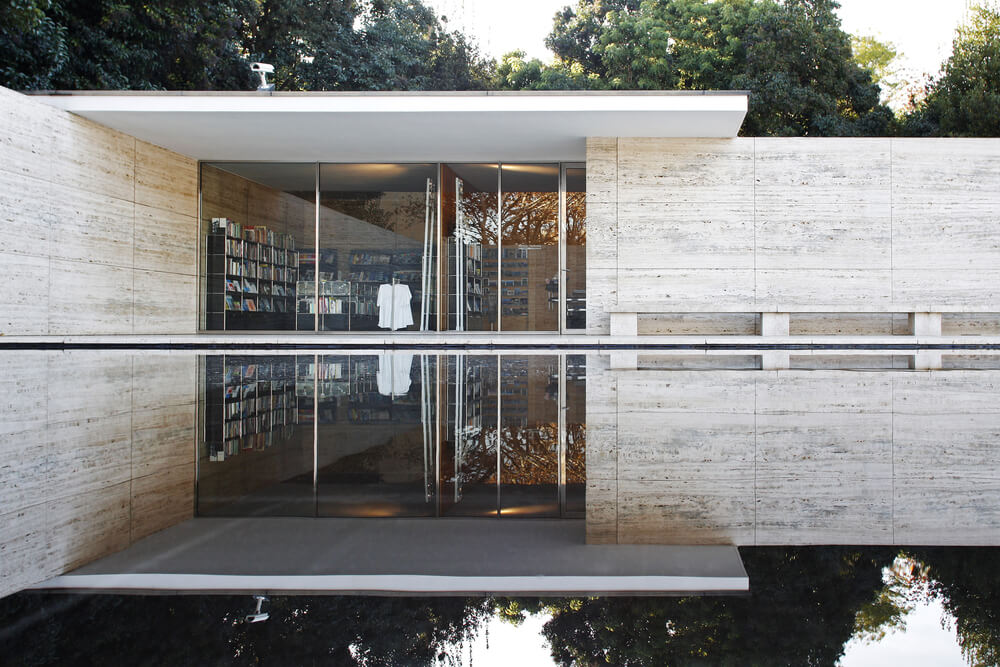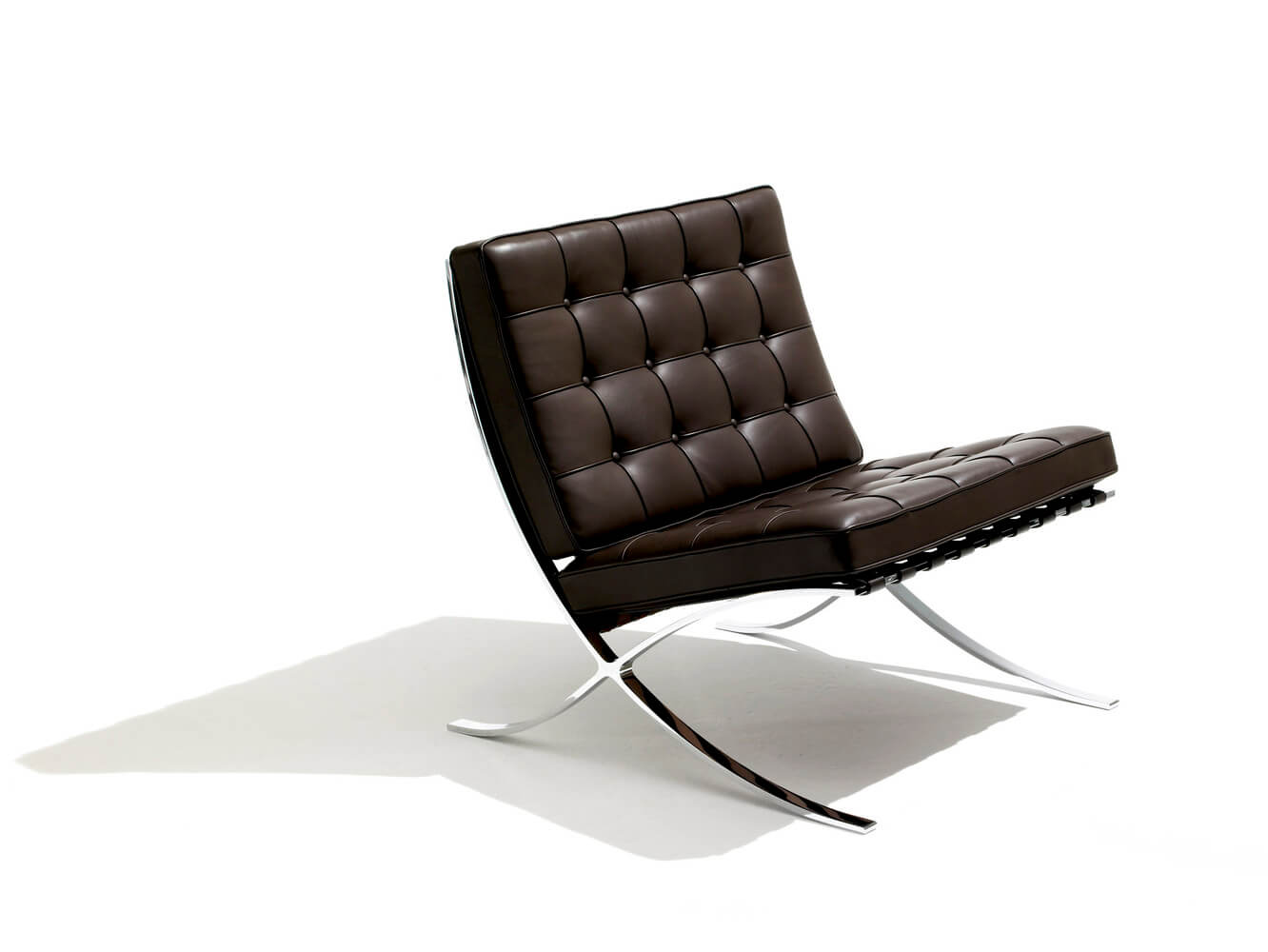Mies Van Der Rohe Decor

Mies van der Rohe decor is iconic in interior design. His vanguard designs use simple lines and fresh results, earning him an important spot in the decor world.
His designs work wonderfully for offices and homes alike. And his vision uses basic resources to transform furniture into something truly beautiful.
Van der Rohe is a pioneer in reducing shapes and simplifying structures. He has inspired designers and architects with his rationalist approach to art.
Historical context
German architect and designer Mies van der Rohe brought his art to life in both Europe and the United States. Many consider him to be one of the first to start modern and industrial architecture. In addition, he was the last director at the Bauhaus.
Since he was a child, van der Rohe was interested in architecture and in studying forms. He later gained experience as an apprentice in Bruno Paul’s studio, where he experimented for the first time and enjoyed direct contact with art.
His success, however, only came with the piece he created in 1911 for the German embassy in St. Petersburg. From that point on, he had a secured himself spot in rationalism and among the big names in architecture as well.

His decor style
The main idea behind his work is basic designs that come from simplicity but can become something much more interesting and visually attractive for decor.
Van der Rohe knew how to use steel and glass (very common materials in the Rationalism movement) to create furniture that fits perfectly into a space. His art actually ran quite close to minimalist designs.
Aesthetically, van der Rohe’s designs reduce forms. Aside from simplification, they are also unparalleled in practicality for home decor.
— Architecture is the will of an epoch translated into space. —
Characteristics of his furniture design
Below are some of van der Rohe’s furniture pieces that have made the most waves in society. In addition, they are common sights throughout homes and workspaces.
- Barcelona chair: the two leather modules ensure comfort, conforming to the shape of the user’s body. The steel frame is reduced into basic, curved lines.
- Barcelona table: the table only has two elements; the first is glass, which acts as a transparent, smooth frame; the second is steel, which forms a cross. The Barcelona table is linear, straight and has simplified forms.
- Lounger: currently on display at the Alivar Museum, this lounger is comprised of white leather modules with semi-cylindrical pieces to ensure comfort. The steel frame is an amalgam of simple curves.
Mies van der Rohe’s art is a clear example of the aesthetics that people want to transmit through their offices, workspaces, waiting rooms, etc.
And his pieces also work incredibly well in home decor.

Where can you buy Mies van der Rohe furniture?
You can find his pieces in certain stores. While they’re not common finds, you’ll have a better chance if you look in stores that specialize in contemporary architecture designs. Try looking online.
- Furnmod: this online store offers its products at very competitive prices. Keep in mind that as they’re works of art, these furniture pieces are more expensive than their conventional counterparts.
- Living Estudio: like Furnmod, Living Estudio also offers Mies van der Rohe furniture along with a fast home-delivery option.
- Voga: Voga is another big furniture store with options. However, their prices are higher than other stores.
- Muebles.com: this store offers a wide variety of furniture products to its customers.
In summary, Mies van der Rohe’s art has had a big impact on art history, especially after the 30s.
Mies van der Rohe decor is iconic in interior design. His vanguard designs use simple lines and fresh results, earning him an important spot in the decor world.
His designs work wonderfully for offices and homes alike. And his vision uses basic resources to transform furniture into something truly beautiful.
Van der Rohe is a pioneer in reducing shapes and simplifying structures. He has inspired designers and architects with his rationalist approach to art.
Historical context
German architect and designer Mies van der Rohe brought his art to life in both Europe and the United States. Many consider him to be one of the first to start modern and industrial architecture. In addition, he was the last director at the Bauhaus.
Since he was a child, van der Rohe was interested in architecture and in studying forms. He later gained experience as an apprentice in Bruno Paul’s studio, where he experimented for the first time and enjoyed direct contact with art.
His success, however, only came with the piece he created in 1911 for the German embassy in St. Petersburg. From that point on, he had a secured himself spot in rationalism and among the big names in architecture as well.

His decor style
The main idea behind his work is basic designs that come from simplicity but can become something much more interesting and visually attractive for decor.
Van der Rohe knew how to use steel and glass (very common materials in the Rationalism movement) to create furniture that fits perfectly into a space. His art actually ran quite close to minimalist designs.
Aesthetically, van der Rohe’s designs reduce forms. Aside from simplification, they are also unparalleled in practicality for home decor.
— Architecture is the will of an epoch translated into space. —
Characteristics of his furniture design
Below are some of van der Rohe’s furniture pieces that have made the most waves in society. In addition, they are common sights throughout homes and workspaces.
- Barcelona chair: the two leather modules ensure comfort, conforming to the shape of the user’s body. The steel frame is reduced into basic, curved lines.
- Barcelona table: the table only has two elements; the first is glass, which acts as a transparent, smooth frame; the second is steel, which forms a cross. The Barcelona table is linear, straight and has simplified forms.
- Lounger: currently on display at the Alivar Museum, this lounger is comprised of white leather modules with semi-cylindrical pieces to ensure comfort. The steel frame is an amalgam of simple curves.
Mies van der Rohe’s art is a clear example of the aesthetics that people want to transmit through their offices, workspaces, waiting rooms, etc.
And his pieces also work incredibly well in home decor.

Where can you buy Mies van der Rohe furniture?
You can find his pieces in certain stores. While they’re not common finds, you’ll have a better chance if you look in stores that specialize in contemporary architecture designs. Try looking online.
- Furnmod: this online store offers its products at very competitive prices. Keep in mind that as they’re works of art, these furniture pieces are more expensive than their conventional counterparts.
- Living Estudio: like Furnmod, Living Estudio also offers Mies van der Rohe furniture along with a fast home-delivery option.
- Voga: Voga is another big furniture store with options. However, their prices are higher than other stores.
- Muebles.com: this store offers a wide variety of furniture products to its customers.
In summary, Mies van der Rohe’s art has had a big impact on art history, especially after the 30s.
All cited sources were thoroughly reviewed by our team to ensure their quality, reliability, currency, and validity. The bibliography of this article was considered reliable and of academic or scientific accuracy.
Dachs, Sandra; García Hintze, Laura; de Muga, Patricia: Mies van der Rohe: muebles y objetos, Barcelona, Polígrafa, 2010.







